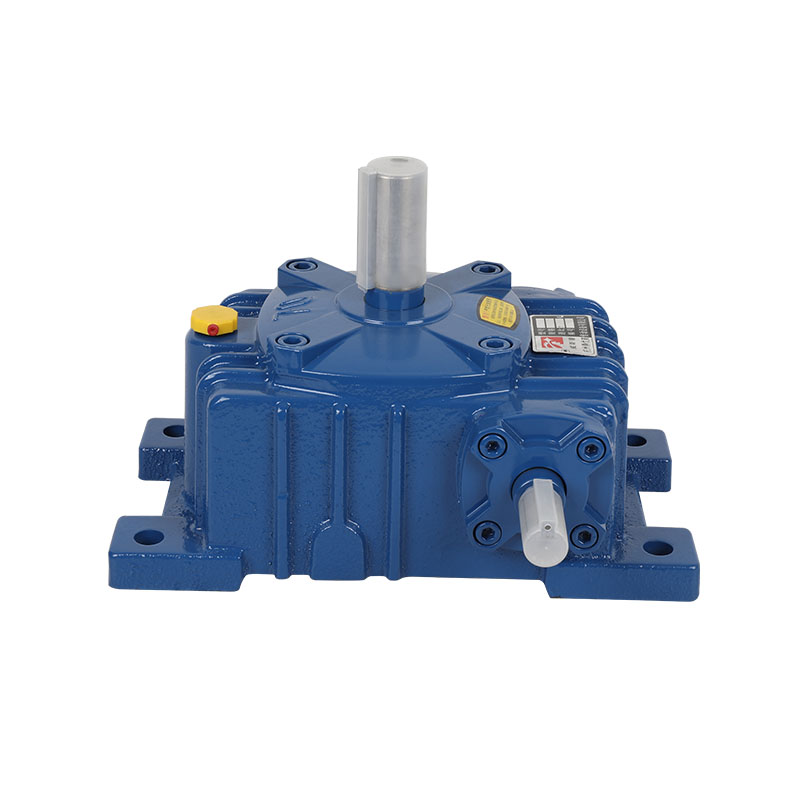WP Worm Gear Reducers are widely used in industrial machinery for their high torque transmission, compact design, and reliability. They are essential components in many applications, including conveyors, mixers, packaging machines, and material handling equipment. While these reducers are valued for their performance, one common concern among operators and maintenance teams is whether they are complicated to maintain. Understanding the maintenance requirements, best practices, and potential challenges can help ensure the long-term efficiency and reliability of WP Worm Gear Reducers.
Understanding WP Worm Gear Reducer Maintenance
A WP Worm Gear Reducer consists primarily of a worm and worm wheel, enclosed in a housing with lubrication to reduce friction and wear. Its maintenance revolves around a few critical areas: lubrication, inspection, alignment, and cleaning. Compared to some other gear types, worm gear reducers have unique characteristics, but overall, they are not excessively complicated to maintain if proper procedures are followed.
1. Lubrication
Lubrication is the most important factor in worm gear reducer maintenance. The worm and worm wheel generate significant friction, so maintaining the correct type and level of lubricant is essential:
- Type of Lubricant: WP Worm Gear Reducers typically require high-quality gear oil or grease with the appropriate viscosity and thermal stability. Using the wrong lubricant can increase wear and reduce efficiency.
- Oil Level Checks: Regular inspection of oil levels ensures smooth operation. Overfilling or underfilling can cause overheating or excessive wear.
- Periodic Replacement: Depending on the operating conditions and manufacturer recommendations, the lubricant should be replaced periodically, usually every 6–12 months for moderate usage, or more frequently in heavy-duty applications.
Proper lubrication extends the lifespan of the reducer and reduces the risk of failure.
2. Inspection and Monitoring
Routine inspection is necessary to identify potential issues before they become serious:
- Visual Checks: Look for oil leaks, unusual vibrations, or noise. Leaks may indicate seal wear, while unusual noises could signal misalignment or excessive wear.
- Temperature Monitoring: Worm gear reducers generate heat during operation. Regularly checking operating temperature ensures it stays within recommended limits. Overheating can indicate lubrication problems or excessive load.
- Wear and Damage: Inspect worm gears, bearings, and housing for signs of wear, corrosion, or mechanical damage. Catching early wear prevents costly repairs.
These inspections do not require specialized tools and can often be integrated into standard maintenance routines.
3. Alignment and Mounting
Proper alignment and installation are crucial for minimizing maintenance complexity:
- Shaft Alignment: Misaligned shafts increase stress on the worm gear teeth and bearings, leading to premature wear. Simple alignment tools or laser alignment systems can help achieve precise positioning.
- Secure Mounting: Ensure the reducer is firmly mounted on a stable surface to prevent vibration, which can compromise efficiency and increase wear.
Correct alignment reduces maintenance frequency and improves energy efficiency.
4. Cleaning and Environmental Considerations
Environmental factors affect maintenance complexity:
- Dust and Debris: In dusty or dirty environments, regular cleaning of the housing and surrounding area prevents foreign particles from contaminating the lubricant.
- Temperature and Humidity: Extreme conditions can affect both lubrication and component lifespan. Following manufacturer guidelines for operating environments minimizes additional maintenance needs.
5. Maintenance Frequency and Ease
Although WP Worm Gear Reducers require attention to lubrication, inspection, and alignment, they are generally user-friendly for routine maintenance:
- Many modern WP reducers feature inspection ports or sight glasses to simplify oil level checks.
- Standardized components, like bearings and seals, are often easy to replace without dismantling the entire unit.
- Maintenance intervals are predictable and can be planned, reducing unexpected downtime.
With proper training and adherence to manufacturer instructions, the maintenance process becomes routine rather than complicated.
Conclusion
So, is a WP Worm Gear Reducer complicated to maintain? The answer is no, not inherently. While it has specific requirements—especially regarding lubrication, alignment, and regular inspection—these tasks are straightforward when performed correctly. Following best practices ensures that the reducer operates efficiently, has a long service life, and minimizes unplanned downtime.
Maintenance complexity is often a matter of discipline and preventive care rather than mechanical difficulty. By using the correct lubricant, performing routine inspections, maintaining proper alignment, and keeping the environment clean, operators can maintain WP Worm Gear Reducers effectively.
For industrial applications, this means reliable performance, reduced maintenance costs, and consistent operational efficiency. With proper procedures, a WP Worm Gear Reducer is not only powerful and efficient but also manageable and easy to maintain over its lifetime.


 English
English русский
русский bahasa Indonesia
bahasa Indonesia
